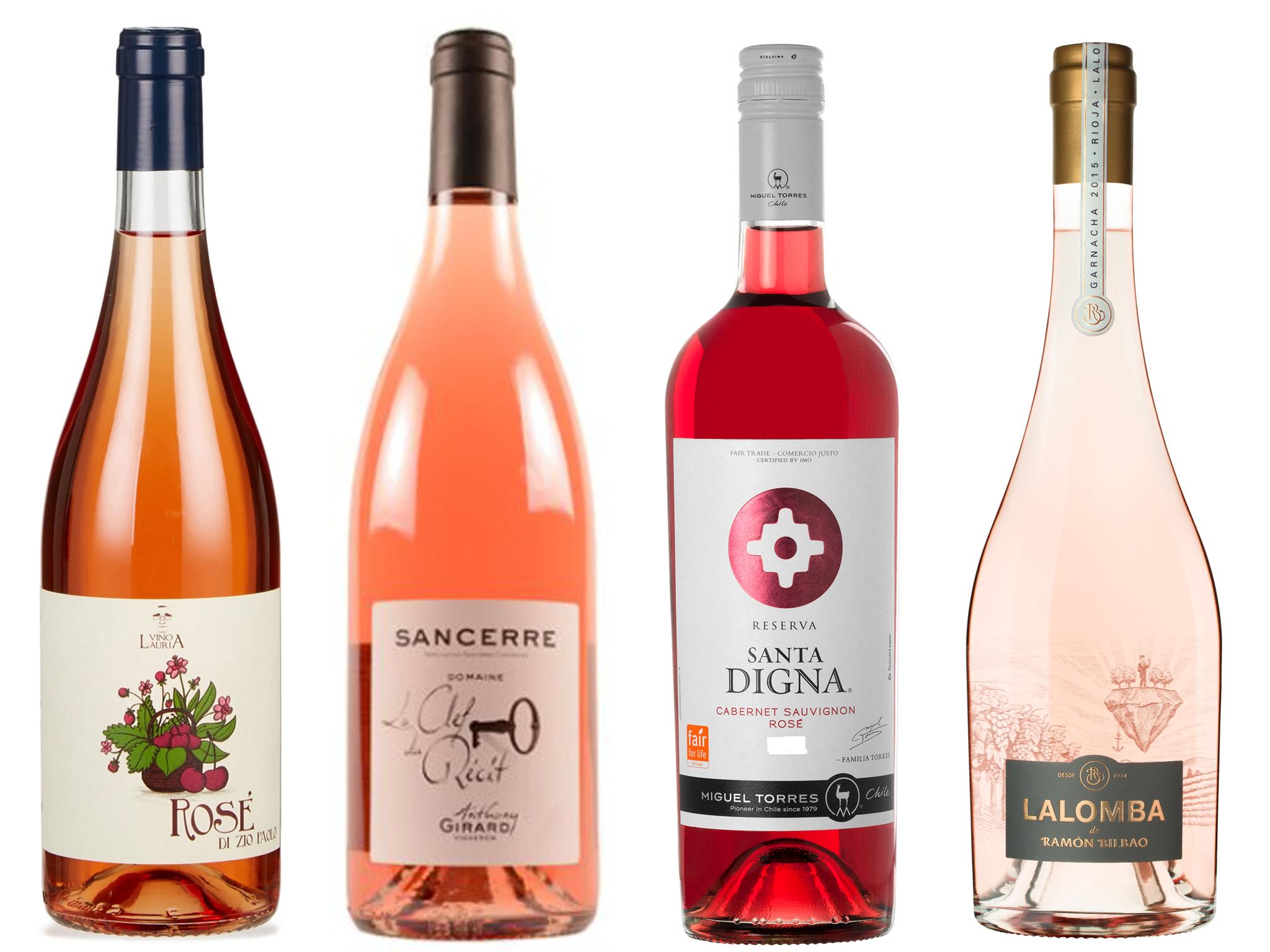The Independent's journalism is supported by our readers. When you purchase through links on our site, we may earn commission.
Wines of the week: 9 roses from around the world
Proving that Provence isn’t the only region producing great rosé, Terry Kirby picks nine of the world’s best

The forecast, it seems, is for a long hot summer of record temperatures. Which may of course be the signal for an extended period of cool and rainy weather. But, if it’s not, we can all expect to be drinking a lot of chilled rosé in the next couple of months, by far the best wine in hot weather, whether it’s an after-work refresher or for al fresco eating.
Last week we focused on Provençal rosés, which have come to dominate the market over the past few years, taking this unpretentious summer wine into more sophisticated and pricey territory. But there are many great rosés being made elsewhere in France, in Europe and around the world, giving rosé lovers a wide variety of grapes, styles and flavours.
In France itself, pink is definitely not confined to Provence – rosé is produced in almost all wine growing areas and most people tend to be a bit chauvinistic about their local stuff, which is invariably considered better than anywhere else.
As well as Provence, the rosés of Tavel in the Rhone Valley have also been celebrated: made with similar grape varieties – grenache, syrah, cinsault, carignan, etc – they are deeper in colour, more rounded and richer than those from further west. For a really excellent dinner party rosé, try the syrah/grenache dominated Domaine des Carabiniers Lunar Apogée 2017 (£15.95 Davywine.co.uk) from a small organic and biodynamic estate near splendid Avignon: bursting with red berry fruit flavours, it’s ideal with a big baked fish, surrounded by roasted Mediterranean vegetables. Moving north and west, the Loire Valley is also a source of well made rosés, usually from either pinot noir or cabernet franc grapes, which emphasise crisp cherry and strawberry flavours and are suitably, fashionably pale; the light and elegant Domaine La Clef du Recit Sancerre Rosé 2016 (£13.20 Genesiswines.com) from well regarded winemaker Anthony Girard is entirely pinot noir and suffused with the flinty minerality derived from the same limestone and flint soils that give Sancerre whites their quality.
Two of the best rosés I’ve ever drunk have been Spanish – one an unlabelled bottle on a kitchen table in a remote village on the island of Fuerteventura, probably from grapes grown on local volcanic soils, and the other a lovely glass of barrel fermented tempranillo in a riotous bar in Seville, where I foolishly never noted the name. Instead, I give you the full-bodied, raspberry fruited and deeply pink garnacha-based Senorio de Sarria Rosado Navarra 2017 (£6.75 Thewinesociety.com), which is just the kind of thing to keep in the fridge for a glass after a long day and to accompany some tapas and nibbles, although it’s substantial enough for something more complex and spicy, such as a chicken tagine. This wine is included in an excellent Wine Society offer on a selection of new rosés, which also includes the Mas de Cadenent Côtes de Provence recommended last week; full details here.
Also from Spain, but much more delicate, citrusy and floral, is the Torres Vina Esmeralda 2017 (£6.99 Dylanswine.co.uk; £7.99 Robertsandspeight.co.uk) from garnacha grapes grown in the northern Penedes region and more rounded than it might be, due to four months’ ageing on the lees. A great screw-topped choice for parties or picnics.
The nine best restaurants in the world (2017)
Show all 9But Spain isn’t just about budget pinks. In mighty Rioja they can take on Provence at their own game, with the garnacha/viura Lalomba Ramon Bilbao Rosé 2017 (£19.95 Greatwesternwine.co.uk; £20 Sommelierschoice.co.uk) from high altitude vineyards in La Rioja Baja. Very pale? Check. Elegant bottle? Check. Bone dry, light, but intense minerality and fruit? Check. Now get the lobster or prawns under the grill.
Rosé is generally an uncomplicated, simply made wine, best drunk young with no ageing [apart from the odd exception as above] or other devices to give the wine more character.
In Italy, the appassimento technique of adding semi-dried grapes is normally only used to give complexity to red wines, but works very well in the Rosa dei Masi, Rosata della Venezie 2016 (£12.95 Winedirect.co.uk, Hailshamcellars.com; £13.32 Corkingwines.co.uk) where 15 per cent of the refosco grapes were aged in drying lofts for 50 days, giving a softness and depth of character to the wine. Excellent with pizza or tomato-based pasta dishes.
Moving down to Sicily and a rosé made from the native nero d’avola grape, grown organically on a family estate near Palermo, where although the grapes are pressed quickly, Provençal style, the Vino Lauria Rosé di Zio Paolo (£15 Harveynichols.com) is still a deep blood orange, full of luscious fruit flavours, but with some underlying, smoky complexity and a touch of the grape’s cherries and chocolate notes; try it with traditional Sicilian swordfish rolls.
Moving to South America and to Argentina, Malbec shares some of nero d’avola’s freshness, particularly when grown at altitude so there are some fine pinks from that grape, such as the Malbec dominated Vaglio Rosé 2017, (£10 Marksandspencer.com) which also has some pinot noir, cabernet and torrontes in the mix. Over in Chile, they tend to like their rosés full-bodied and fruit-filled, such as the Fairtrade cabernet sauvignon Santa Digna Cabernet Sauvignon Reserva 2017 (£7.99 Robertsandspeight.co.uk; £8.50 Winedirect.co.uk). Definitely one for the barbecue, with perhaps grilled lamb or merguez sausages.
Subscribe to Independent Premium to bookmark this article
Want to bookmark your favourite articles and stories to read or reference later? Start your Independent Premium subscription today.

Join our commenting forum
Join thought-provoking conversations, follow other Independent readers and see their replies